The Q1 national accounts from the Australian Bureau of Statistics (ABS) were released on Wednesday, which revealed that per capita GDP fell back into negative territory following a brief respite in Q4 2024.
Real per capita GDP declined by 0.2% in Q1. This represented the ninth quarterly decline in the past 11 quarters, with per capita GDP down a total of 1.7% over that period.
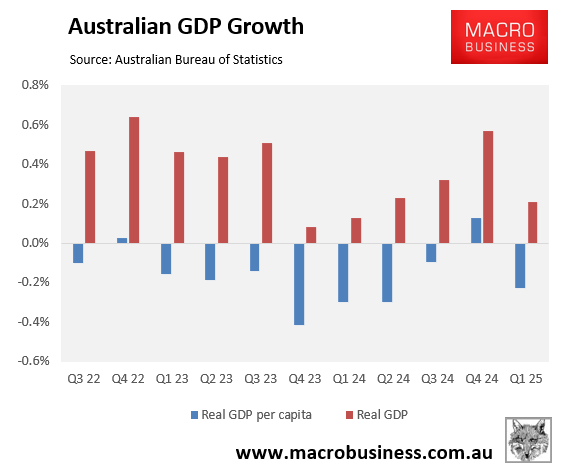
Alex Joiner, chief economist at IFM Investors, released a terrific chart pack showing how Australia’s living standards are in decline.
The first chart shows how the economy continues to be driven by population growth, which increased by 1.7% in the year to Q1 2025.
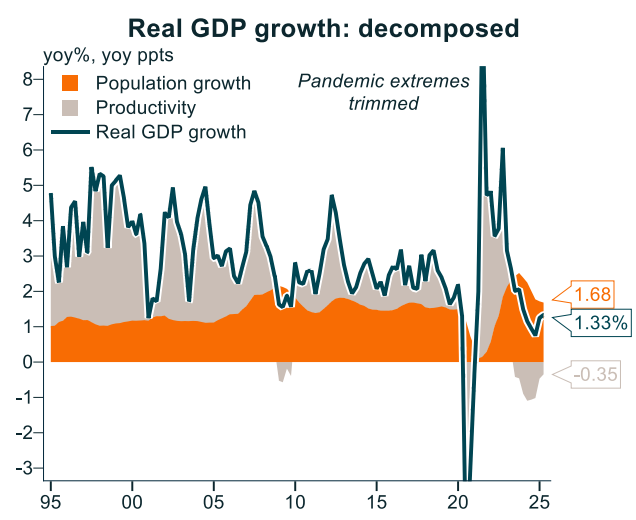
Australia’s aggregate economic growth rate of 1.33% now ranks below the median of advanced nations, despite our faster population growth:

“The result underwhelmed the RBA’s relatively modest quarterly expectation of 0.45% qoq growth and 1.8% yoy”, noted Joiner.“The Bank now needs 0.7% qoq in Q2 to hit its forecast—a rate not seen since Q2 2022”.

Australia’s real per capita GDP growth has stalled badly over the past 15 years, as illustrated below:
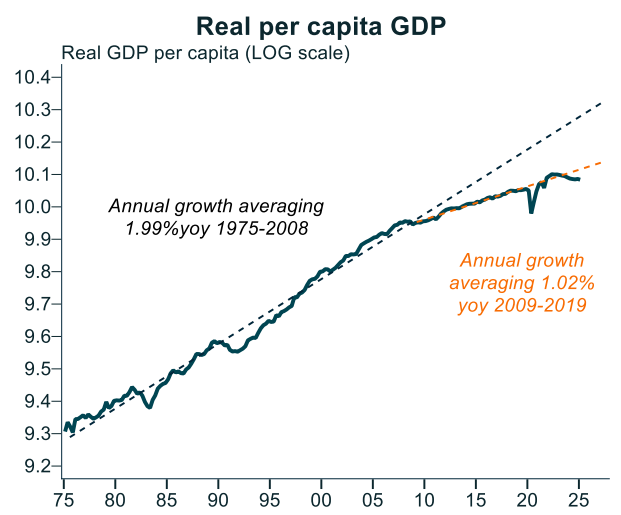
Real net national disposable income per capita – a broad measure of living standards – also fell by 1.4% in the year to Q1 2025:

Government spending has been the overwhelming driver of Australia’s real GDP growth over the past 2o years, growing by 77% since 2005, versus 36% growth in household spending:
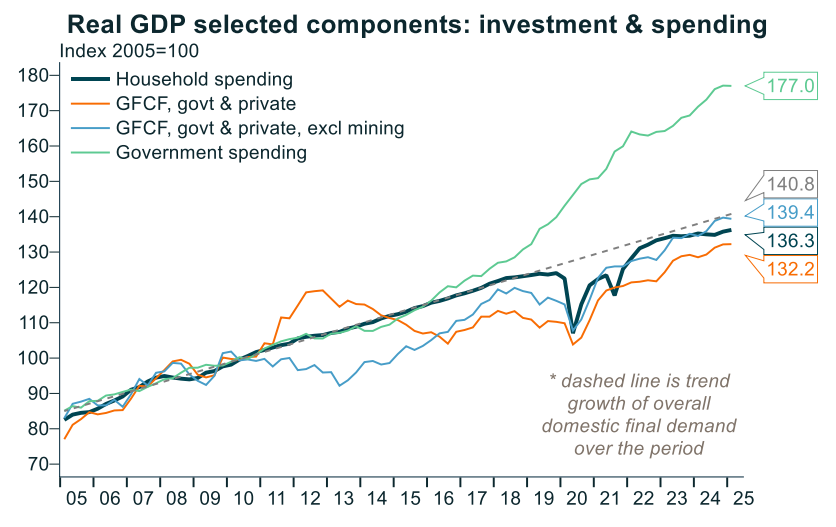
“The private sector has stalled. The public sector is the key driver of growth and that’s not sustainable”, notes Alex Joiner.
Meanwhile, “household spending growth per capita still negative”:
On an annual basis, real per capita household spending has been negative for seven consecutive quarters:
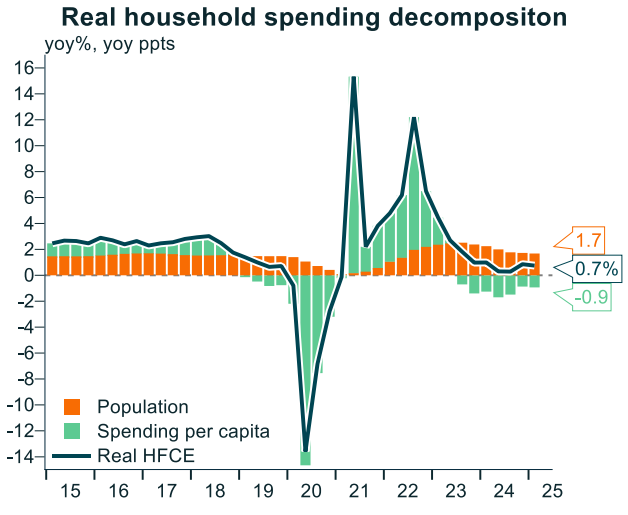
Household consumption’s share of GDP has fallen to only 51.2%, well below the average of 55.8%:

Consumption has also moved to essentials (60%) over discretionary spending (40%), suggesting households remain under pressure:
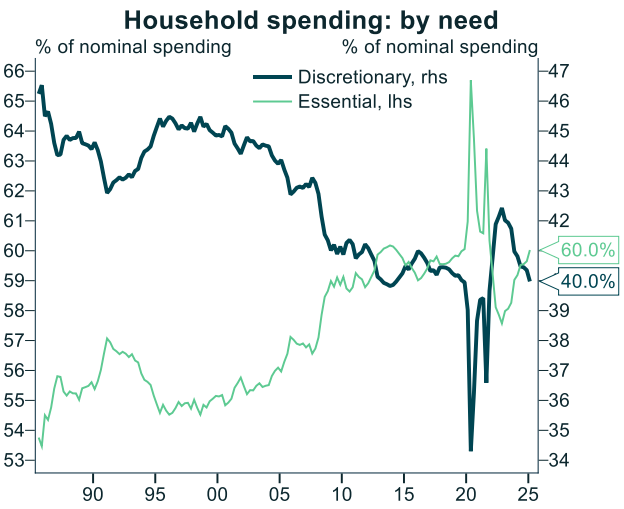
Real per capita household disposable income at least rebounded by 1.7% in the year to Q1 2025, following its world-record (~8%) decline:
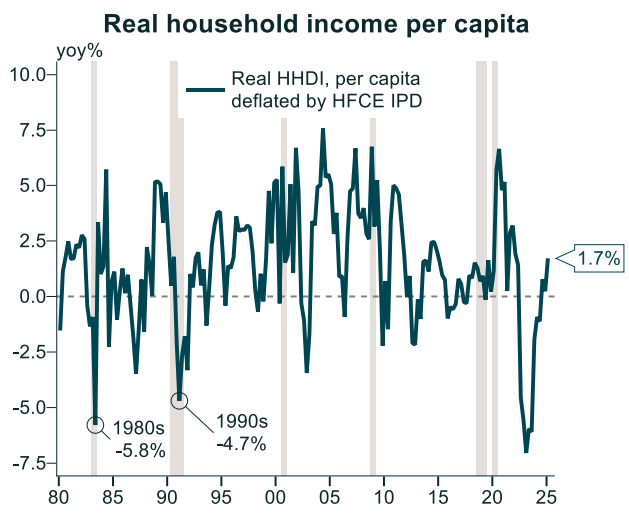
In bad news for capital deepening and productivity, private business investment has stalled:

Private business investment as a share of GDP is tracking near cyclical lows:
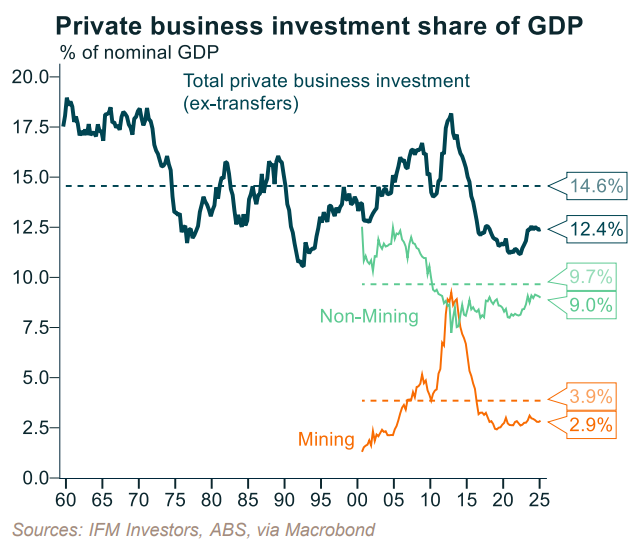
Meanwhile, public demand as a share of GDP was a near record high 28.7%:
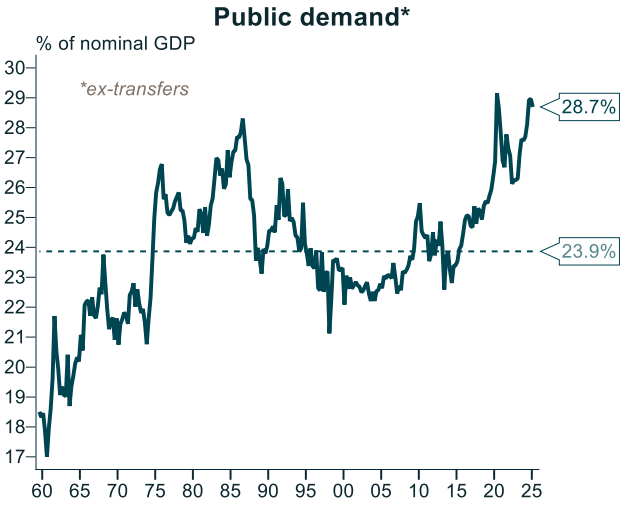
Indeed, the public sector drove 1.1% of the 1.9% increase in domestic demand in the year to Q1 2025:

Labor productivity was flat in Q1 2025 and fell by 0.1% year-on-year:
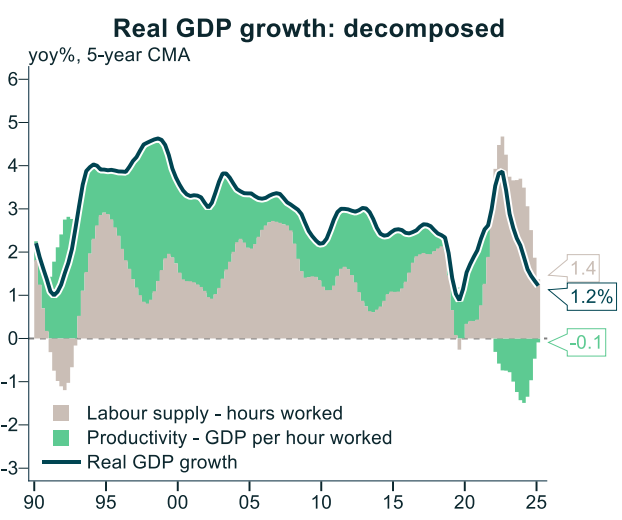
Australia’s labour productivity has increased by only 2.5% in the past decade:
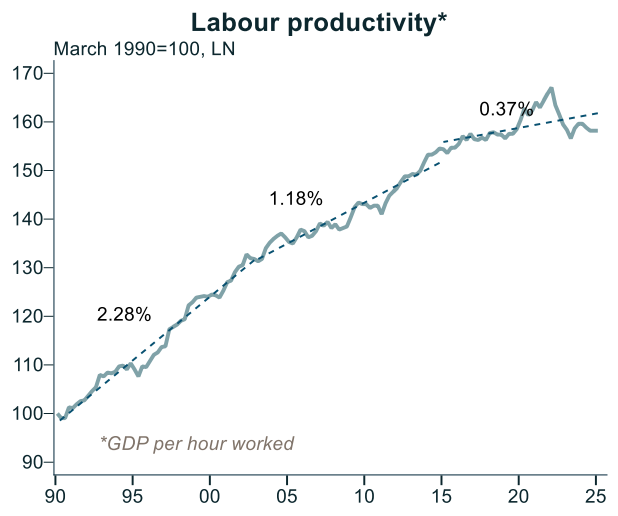
Overall, it is another depressing release showing that Australia’s economy faces a lost decade.

